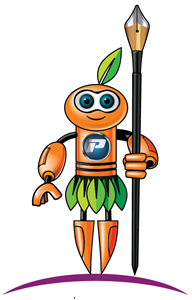28 Sep Quanos ST4
Quanos ST4
— Himanshu Chopra
Quanos ST4 (earlier owned by Schema) is a German based Component Content Management System (CCMS) used for creating, modifying, releasing, publishing, and maintaining a variety of technical information.
Content created using ST4 gets stored in a remote ST4 server where various authors of a team (or different teams) collaborate, create, and publish the content together on their respective client machines. There are three types of access levels provided to client machines: Thin client, Rich client, and Architect client. Users having a Rich client can manage translations, edit productions, filter settings, and produce the outputs. The highest level of access is reserved for Architect client.
Apart from access management, this tool allows authors to create and store the content inside its database only once, and use it later. ST4 provides the benefit and option of content reuse, content repurposing, topic-based authoring, single sourcing with variety of output formats (PDF, HTML5, Word, XML, etc.), version management, variant management, flexibility of using simple editors like Microsoft Word or even more sophisticated XML editors like JustSystem’s XMetaL and Adobe FrameMaker to name a few.

The concept of reusing content is entirely different from writing using a traditional simple editor like Microsoft Word. In Word, copying and pasting of content from one file to another creates 2 disconnected copies and both copies have to be updated separately, when required. However, in content reuse, since the content is connected (linked), no separate content update is required in different files, rather, the content gets updated centrally in the ST4 database. This not only saves the time and effort of an author, but also reduces redundancy, maintains consistency, and minimizes errors. Another benefit is cost savings. Since lesser content is required to be created, managed, and translated, the overall cost of publishing customized content is also reduced!
The content, once finalized and published, freezes for that version and can be edited again by creating its new version. ST4 offers a virtually unlimited number of versions!
With its simple yet powerful user interface, it is quite easy to create modular content (in the form of nodes and fragments) and provide customized as well as predefined metadata and taxonomies to even the smallest chunk of content, as per the need. The content is also kept separated from the structure and layout for better flexibility and control. Schema ST4 can create tables of information from raw data and provides inbuilt, professional, and rich layout templates for a great look and feel of the published output (both, print and soft).

The modular content, after being created in ST4, is utilized to get a controlled output with the use of customized filters. These filters allow an author to publish only the required content and filter out the rest, thus, offering excellent content flexibility and control. This is similar to the conditional text feature of Adobe Robohelp, where the desired content gets reflected only after certain criteria and conditions are met, or else remains hidden in the output.
Using its XML editing system, ST4 not only allows the preview of the created content in a simple, non-XML quick view, but can also import and export standardized XML for translation purposes. It also offers an exact preview of output for review and final checks without needing to publish the content directly. The user (e.g. an editor or an information architect) can also insert the content in quick view of the created content, inside ST4 directly, to provide the review feedback. Other than XML, Schema ST4 also allows the import and export of various scaler and vector graphics and illustrations like .svg, .png, .jpg, .tiff etc.
That’s not all! ST4 also allows the import of videos in various file formats like .mp4 and .mpeg4 to provide a highly engaging output.
Another important feature of ST4 is the use of variables and a variable table. A variable is the chunk of content which is created once but provides a varied output, based on selection of certain filters and properties. A variable table consists of such variables and the value set or the variant.
Think of a scenario where you have to publish the weather forecasting report of 4 metro cities (Delhi, Mumbai, Kolkata, and Chennai) using ST4. In such a case, each of these 4 metro cities is treated as a variant and the associated varied quantities like temperature, humidity and atmospheric pressure of that city are variables, defined in the variable table of ST4. This can be better understood from the following variable table:

After implementing the variables, the quick view for the metro city ‘Delhi’ looks as follows:

Other advanced features of ST4 include collapsible topics in HTML, exploded views, advanced searching, linking, terminology management, content comparison across different versions (compare view), version browsers and structure net.
ST4 is used in various sectors and organizations including IT, Healthcare, Energy, Manufacturing, Civil, and Aeronautics where large and complex information is managed.
Finally, each ST4 license comes with a considerable cost, hence, with the number of content management systems already in the market, ST4 is best suited in cases where lots of version management, variants, complexity, content, and variety of file formats is involved, and content requires continuous and collaborated updates.
"Let me live, love, and say it well in good sentences."
- Sylvia Plath
About the Author
Himanshu has extensive experience working with fortune 500 companies for technical documentation requirements in different fields such as Automation, Power, software, and Healthcare
Current Role: Technical documentation specialist
Company: Philips Healthcare India
City: Pune
Connect at LinkedIn





No Comments